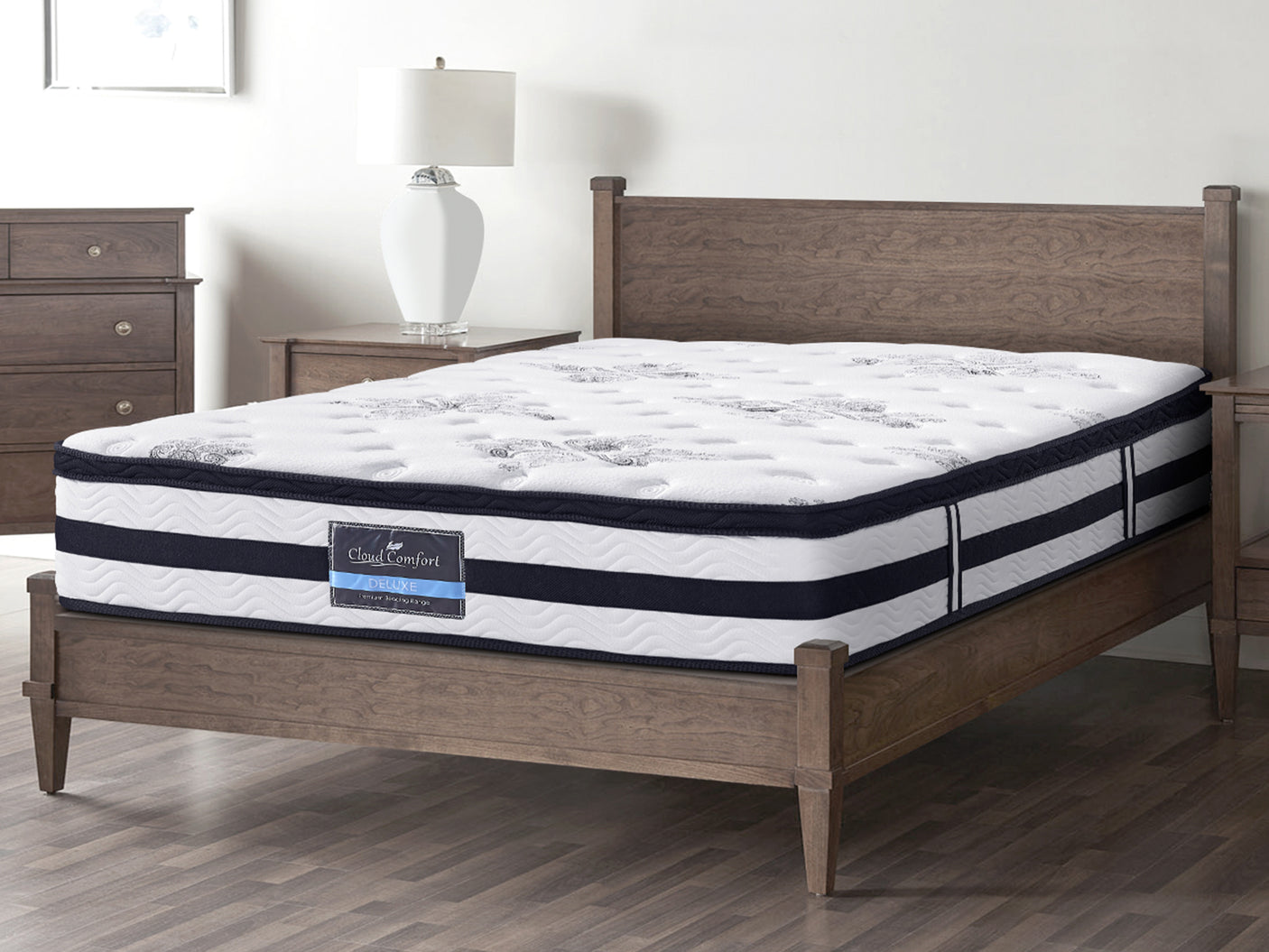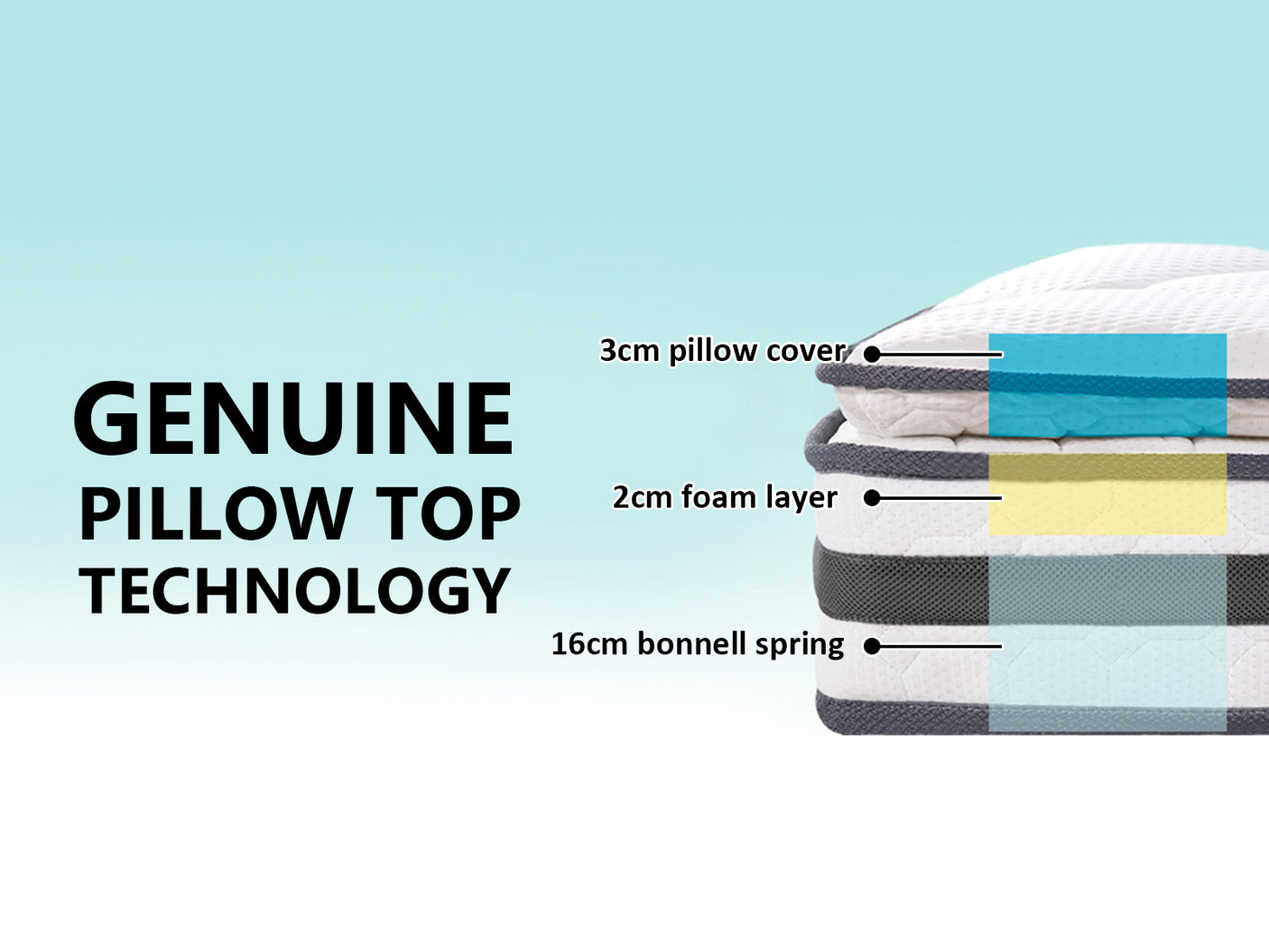If upon waking, you have some aches and soreness, or if your mattress does not really feel comfortable, you might be thinking, "How often should I change my mattress?" This is a question not uncommon amongst Kiwis, especially considering the fact that purchasing a quality mattress is not a small investment.
Generally, manufacturers highlight the fact that a mattress should be replaced after 7-10 years. However, this does not seem to be the whole truth. The life span of your mattress is determined by several factors such as the material, the quality of the mattress itself, the usage, and maintenance.
The aim of this detailed guide is to help you identify the most common signals that indicate replacement, understand average life expectancy of a mattress based on its type, and make the right choice if and when to purchase a new sleep surface.
The Average Lifespan of Different Mattress Types
Different mattress materials have varying durability levels, which affects how long they typically last before needing replacement:
Innerspring Mattresses: 5-7 Years
Traditional innerspring mattresses generally have the shortest lifespan among mattress types. The steel coils that provide support eventually lose tension and begin to sag. Quality construction can extend this timeframe, but most innerspring mattresses show significant wear after 5-7 years of regular use.
Such signs of wear would include squeaking of springs, noticeable sagging, and reduced support, especially where the upper body weight concentrates during sleep.
Memory Foam Mattresses: 8-10 Years
Memory foam mattresses generally have a longer lifespan than innerspring models, averaging 8 to 10 years. Furthermore, those with higher density foams (kg/m³) tend to have even greater lifespans than their lower density counterparts.
With time, an individual memory foam may not be able to fully 'recover' to its original form owing to permanent changes such as body impressions which makes it less useful as a pressure relief component which it was designed to do. Additionally, the material may soften and lose its support over time.
Latex Mattresses: 10-15 Years
These types of mattresses are renowned for their enduring nature, often exceeding a lifespan of 10 to 15 years. Moreover, these mattresses also do not sag or lose their supportive properties as quickly as other materials.
Incredible durability aside, natural latex greatly outlasts synthetic latex, although both types do eventually degrade and lose elasticity after a while.
Hybrid Mattresses: 6-8 Years
By combining the innerspring coils with foam layers, hybrid mattresses strike a balance between comfort and durability, generally lasting about 6-8 years, though premium models may outperform that expectation.
As with most other types of foam mattresses, the foam components tend to show signs of wear long before the coil system fails. As these mattresses age, softening, and impressions become common.
8 Signs to Replace Your Mattress
No matter the age or type of mattress you have, there are warning signs that suggest you might consider replacing the mattress:
1. Visible Sagging or Indentations
If the mattress is sagging in the middle or an area where you usually rest is sagging, this is a clear sign that the mattress is older than its rejuvenation date and needs supporting. Permanently embedded impressions exceeding 2.5cm/1 inch will curtail support and slip spine alignment.
Even after attempting to rotate the mattress, sagging indentations will remain regardless of whether they are rotated or rotated. It can be said that indentations once formed will remain for the duration of the mattress's life.
2. Nightly Back, Neck, or Joint Pain
As you age, you may come to realise that everyday actions such as getting out of bed become much more laborious than expected. This is usually caused by tightly wound muscles, resulting from sustained tension accumulating due an unsupported mattress—feeling sore and stiff upon waking and feeling refreshed after a few hours of being awake means your mattress is likely beyond its expired life.
Your mattress must effortlessly maintain proper spine alignment throughout the night, hence lack of support results in muscle tensing due a compromised support mechanism which snowballs into morning stiffness and backache.
3. Improvement in Sleep Quality Somewhere Else
If you find heightened levels of rest while traveling or visiting friends without any change to your habits—this phenomenon usually occurs at hotels or friends' places—is a reliable sign that Indicates you might need to part ways with your current mattress.
In the same manner, if you are observing that your sleep is more refreshing when spent on the sofa compared to the bed, then it is a clear indicator that your mattress needs to be renovated.
4. Heightened Allergic Reactions
Allergens such as dust mites, mould spores, and animal dander naturally collect in mattresses over time. If you are waking up with aggravated allergy symptoms, this could mean that your mattress is the nest to a plethora of allergens.
While regular maintenance does help, it cannot eliminate all the dirt collected over years of usage.
5. Distinctive Sound
Movement might also be accompanied by squeaking, creaking or other sounds. These could indicate problems with the mattress structure. In the case of innerspring types, it often translates to broken or weakened coils.
These aren't only annoying sounds. They also represent failure of crucial parts which are actively supporting the mattress, making internal components obsolete.
6. Major Changes to Your Body or Sleep Patterns
Changes to your life can warrant a new mattress purchase, even if your current one is not that old:
- Gaining or losing over 10-15 kg in weight can impact how your mattress supports your body.
- Pregnancy and postpartum recovery has different support requirements.
- Worsening medical conditions such as arthritis, or chronic back pain may require different levels of support.
- Ageing generally increases the need for pressure relief and support.
7. Noticeable Damage or Accumbrance
Damage in the form of cuts, stains, or other forms of marks lowers comfort and hygiene, and indicates it time for a replacement.
Discolouration is a sign of oxidation for foam, which coincides with the damage of support properties.
8. Seems Like You're No Longer Sleeping Well
A decline in quality of sleep over time is one of the more important signs to look for that your mattress may be the issue. Common signs are taking longer to sleep, increased time spent tossing and turning, and waking up tired despite spending hours in bed.
Worn-out mattresses have a direct impact on sleep quality leading to adverse health effects.
Factors That Affect Mattress Lifespan
Knowing what influences mattress durability can both help extend the life of your current mattress as well as help you make better choices when purchasing a new one:
Original Quality and Price Point
The lifespan of the mattress tends to increase with improvement in the materials and construction utilised. Even though premium mattresses require a larger investment, they often provide better value over time by lasting years longer than alternative budget options.
Typically, high-density foams, tempered steel coils, and natural materials offer superior components, sustaining their properties longer under regular use.

Body Weight in Relation to Sleep Position
Heavier individuals tend to place more pressure on mattresses, shortening their lifespan. Faster wear is also common amongst couples due to increased weight and movement compared to single sleepers.
Your primary sleep position also affects wear patterns. Focused pressure points are typical for side sleepers, while back and stomach sleepers distribute weight more evenly across the mattress.
Maintenance and Its Requirements
Taking good care of a mattress optimally prolongs its period of useful life. These include:
- Using the right bed frame or foundation offers essential support.
- Wearing is helped by rotating the mattress (where recommended by manufacturer) at least once in a while.
- Accumulating stains, spills, and allergens are prevented by mattress protectors.
- Avoiding premature degradation is accomplished by cleaning according to the manufacturer's guidelines.

Environmental Factors
The ventilation of a bedroom may have an impact on the longevity of a mattress.
- The presence of high humidity can promote the formation of mould and mildew, particularly in foam mattresses.
- Exposure to direct sunlight will lead to the degradation of materials which will result in premature ageing.
- Homes located on the coast will have a different rate of wear and tear depending on the level of humidity compared to inland properties due to New Zealand's varied coastal climates.
When to Replace Your Mattress Even If It Seems Fine
Certain instances can make replacing a mattress reasonable even in the absence of clear wear and tear signs. These include:
Major Turning Points
- Moving from single to couple sleeping arrangements accounts for one reason why having a mattress reconsideration is applicable.
- The development or resolution of certain health conditions.
- Support needs evolving post injury or surgery recovery.
- Significant weight changes, either loss or gain.
Technological Advancements
After a period of ten years, mattress technology changes significantly. Other newer options will likely offer enhancements such as:
- Couple movement regulation surpassing the prior standards.
- Support zones for better alignment are targeted.
- Temperature regulation capabilities.
- Advanced materials provide pressure relief.
Hygiene Considerations
A main reason mattresses even with protective covers gather dust over time includes body oils, skin cells, dust mites, and other allergens.
For allergy or asthma sufferers, modernizing an old mattress can dramatically improve hygiene-related sleep factors.
Making Your Next Mattress Last Longer
Following these guidelines will increase the lifespan of the mattress:
Use Proper Support
Ensure your mattress has an appropriate foundation according to manufacturer specifications. Insufficient support directly translates to too much stress which causes structural deterioration and sagging too soon.
Box springs, adjustable bases, and platform beds all offer different benefits—choose the option recommended for your specific mattress type.
Protect Your Investment
Breathable materials like latex or gel-infused top layers will help regulate temperature and moisture. A high-quality waterproof mattress protector will shield against spills and allergens increasing the overall longevity of the mattress. This simple addition can significantly extend mattress life.
This protection becomes essential for households with pets or young children.
Care on a Regular Basis
Consistency is key with these practices described:
- Separate your mattress every 3-6 months (unless advised otherwise by the manufacturer).
- Every so often, use the vacuum cleaner to clean the mattress surface using the upholstery attachment.
- Mattress needs to be aired out from time to time need by removing the beddings for some hours.
- Appropriate cleaning methods should be used to remove any spills or stains as soon as they occur.
Conclusion: Assessing Your Sleeping Needs
In conclusion, the most important factor determining when to replace a mattress is sleep satisfaction together with comfort. Replacement is generally recommended after a range of 7-10 years, however, your individual circumstance should make this decision.
As long as you are waking up feeling refreshed and pain free, even if the mattress is older, it is unlikely to be the problem. On the other hand, if you are experiencing the red flags we have outlined, then it may be time to consider a replacement even if the mattress is quite new.
Prioritise the impact of quality sleep on your health, productivity and overall well-being. Quality sleep that is always supportive of your needs is crucial to maintaining overall health.
TSB Living stocks a wide range of quality mattresses suitable for varying preferences, body types and budgets. A better sleep awaits you when you browse our collection.
Looking for more sleep and bedroom advice? Check out our other guides:





